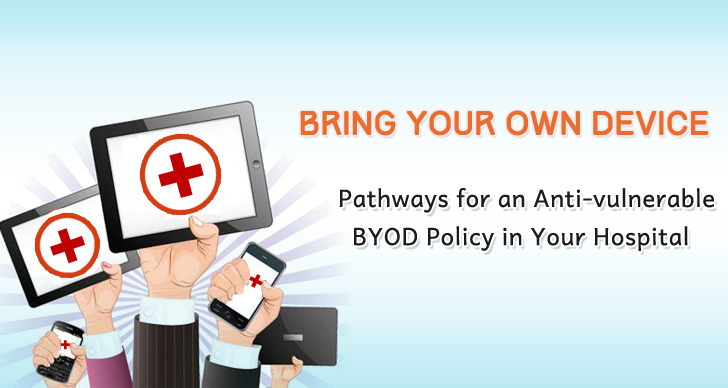BYOD – Bring Your Own ‘Device’ or Bring Your Own ‘Detriment’?
Bring Your Own Device (BYOD) is the policy of employers authorizing their personnel to utilize their own mobile gadgets such as tablets or smartphones for official and personal functions. In the recent years, a sheer rise in the BYOD movement is noticed across the country.
But, naysayers say that implementing the BYOD policy is tantamount to dropping a bombshell in one’s own healthcare facility. This article brings the ‘techniques’ to achieve the BYOD benefits into limelight.
BYOD and the Gadget World :
The escalating BYOD policy implementation is kindling the growth of gadgets such as iPads, iPhones, tablets, smartphones, laptops, mobile PCs, etc. in the market. Besides, the market shares of operating software systems like Linux or Windows and other supportive software applications or the so called “apps” right from health calculators to ICD-9 related apps are also fuelled to increase.
The BYOD Benefits :
Employer-edge :
- As far as the healthcare provider is concerned, the BYOD increases productivity as the users feel more amicable to the device usage.
- Users frequently upgrade their hardware and software apps, and may purchase cutting-edge devices which could trim down the operational costs of the employer. But, cost alone must not be the crucial factor to decide BYOD implementation at your hospital or clinic.
Employee-edge :
- There is a survey report that 83% of users believed that their mobile gadget is much vital than their morning refreshment beverage.
- This is because they love their device in which they had invested due to their own wish and it’s not a device of the employer’s choice.
The Conduit for Smooth Sailing !
- Design a ‘bespoke’ P&P Manual :
- Most healthcare centers just follow the default policy and procedure (P&P) manual which may not fit their facility.
- It is mandatory to analyze the cost-benefit ratio while confirming the standards for permitted mobile devices, user segments (mobile optional, mobile augmented, mobile primary) and accessible personnel in each segment across the facility.
- Security and Control :
- Many healthcare providers and practice managers deem that security is the most challenging issue of mobile enterprises in their facility. Thus, FDA-approved mobile apps and devices tuned-to-the-HIPAA policy must be used under the supervision of a tech-savvy healthcare professional.
- If there is a security breach, a pre-programmed action plan must be followed to retrieve and expunge the patient health information (PHI) stored in the violated device through remote tools.
- Educate About the Risks :
- Many healthcare centers are already in the data breach due to the negligence of their employee or vendor or lost/ stolen mobile device.
- Thus, it is obligatory for the healthcare administrators to enlighten their internal and even external stakeholders about the risks involved in the security infringement.
- Support and Update :
- Though your employees are tech-savvy, they may be in need of constant support regarding the usage of new healthcare and other apps, and healthcare policy updates like HIPAA – so as to forbid the legal gaffes.
- So, appoint staffs to constantly monitor the amendments in the healthcare policies and healthcare IT (HIT) technologies and also update the same in the in-house setting through frequent staff meetings, training and development programs.
Just mellow out with your BYOD implementation by banking with MedicalBillingStar !
